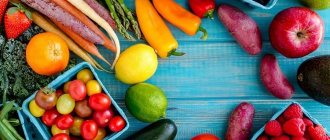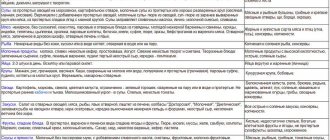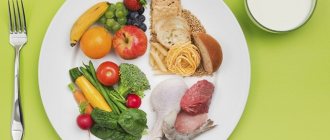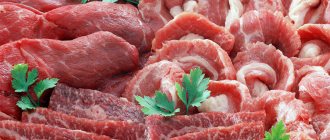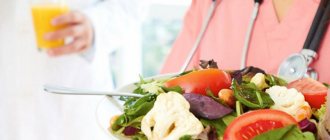Allergy is not the most harmless reaction of the body. Doctors have long attributed this phenomenon to a disease. It is difficult to treat, often progresses, and has dangerous consequences. And nutritional adjustments are always needed. A hypoallergenic diet for children is perhaps the only way to help your child.
The need for a hypoallergenic diet for a child
What is an allergy? This is a false reaction of the body. The immune system begins to produce antibodies against very harmless substances. Two children of the same age can split a tangerine in half, eat it, and one of them will break out in a terrible rash or start coughing. Nothing will happen to his friend. Sometimes the reaction does not occur to foods. Irritants can be medications, plants, and hygiene products.
If you do not prevent the entry of irritants into the child's body, the risk of complications increases. A severe rash and crusts will appear on the skin. If the allergy is internal, then a cough may occur first, then bronchial asthma, Quincke's edema. There are other consequences. Antihistamines, which are prescribed by allergists and pulmonologists, cannot completely reduce the harm of irritants. Therefore, a hypoallergenic therapeutic diet for children is a necessary measure.
Important! Even with a reaction to herbs or hygiene products, it is necessary to correct the diet and exclude obligate allergens.
Symptoms and risk factors
The course of the disease is due to the fact that the digestive system rejects a certain category of products (allergens). If the body does not react immediately after eating, but takes several hours, this type of allergy is called a delayed disease.
Here is a list of manifestations observed with allergies:
- cutaneous _ These include dry skin, redness and rashes. Itchy skin is especially annoying. If measures are not taken in time, then the next stage will be allergic dermatitis;
- digestive . The child feels sick and has a stomach ache. He may not just burp, but actually vomit. In addition to bloating, bowel movements are often disturbed. Such manifestations can occur in a whole group of allergens; these symptoms belong to dysbacteriosis;
- respiratory _ The baby has a runny nose and a stuffy nose. However, the symptoms are not associated with a cold.
It must be remembered that individually these symptoms can also indicate other diseases. If reactions come from different directions, very often this indicates an allergy. Hereditary manifestations of a negative reaction arise for various reasons:
- mother violates the rules of healthy eating;
- underdeveloped digestive organs;
- from the first days the child’s intestines are infected;
- premature artificial feeding;
- overfeeding the baby;
- highly allergenic foods are prematurely introduced into the diet, and so on.
Types of diet for children with allergies
The ideal option for parents is to get tested. For this purpose, blood may be taken from the child or allergy tests may be performed. The choice of method depends on age, financial and time capabilities. For example, to conduct allergy tests, several visits to a specialist are required; patients are often sent to the hospital and related tests are performed.
Not every person can quit work or take a vacation. Some parents do not immediately seek help and are treated with improvised means. Tests may be delayed due to worsening allergies. To be sure, you must first remove all reactions, take a break from taking antihistamines, and then begin diagnostics. Therefore, a diet is prescribed before a referral for examination is issued.
There are two types of diet for childhood allergies:
- nonspecific diet. Suitable for people of any age. The essence is clarification, exclusion of certain products from the menu. The allergen can be determined medically or by observation. For example, many parents notice their child’s reaction to a certain fruit, dessert, dish;
- elimination diet. Suitable for young children. The essence is the competent introduction of complementary foods, the exclusion of potentially dangerous allergens. So, parents gradually introduce foods with gluten, sugar, and bright colors. At the first reactions, the diet is adjusted with the help of a pediatrician.
Any diet, regardless of type, is aimed at relieving symptoms. With the additional use of antihistamines, you can quickly remove itching, redness, rash, and cure an allergic cough. The second goal of therapeutic nutrition is to reduce the negative impact of antigens. Sometimes dietary nutrition is used to identify the culprit product. A person eats hypoallergenic food for a long time, then potential “pests” are gradually introduced.
Careful food control
Whatever the cause of the allergy, a child with such an illness should eat under the supervision of his parents. He is not offered food that seems healthy, but only what is approved by the doctor. This necessary observation will prevent the disease from spreading and help avoid complications.
- More stringent food requirements are imposed at the initial stage, when acute manifestations of allergies are noticeable on the skin. At this stage, the allergic child is limited in diet to the foods that caused the attack. He is also not given those that are on the list of potentially causing allergies.
- When the acute phase has passed, dishes and products with hazardous substances identified using a food diary and causing cross-allergy are removed from the diet.
- If the allergy has passed, the body needs to be restored. Products that were previously prohibited are gradually being introduced. The child is being watched. If the body is irritated by them, they are abandoned.
Allergenic foods and the strength of their effect on the body are shown in the following table
| Degree of negative reaction | Product examples |
| High | Cow's milk, fish and all seafood, all types of meat broths, citrus fruits, eggs, strawberries, carrots and so on |
| Average | Pork and rabbit meat, buckwheat and rice cereals, potatoes, bananas, apricots, cherries, cranberries, currants, etc. |
| Short | Some types of fermented milk products, horse meat (according to the experience of doctors, it can be consumed as hypoallergenic meat), watermelon, plums, green vegetables |
Reference. Products associated with a high degree of negative reaction are tried after 2 years.
The most dangerous foods for allergy sufferers
There are foods that most often cause allergies. They are called obligate allergens. These species are excluded even without analysis. That is, if a child suffers from allergies, then it is important to remove all this from view. They provoke the body to produce antibodies, which disrupts the overall picture.
What not to do on a hypoallergenic diet:
- citrus fruits, all types and regardless of quantity;
- strawberries, raspberries, wild strawberries, melon and pineapple, pomegranate;
- honey and nuts;
- fish, fish caviar, seafood;
- chocolate, cocoa, coffee.
Sugar, drinks with dyes, chips, crackers, and other foods with aromatic additives and flavor enhancers are excluded.
Contrary to popular belief, not all red foods cause an allergic reaction. It may not be present on cherries, red currants, beets, and bell peppers. Needs to be checked individually.
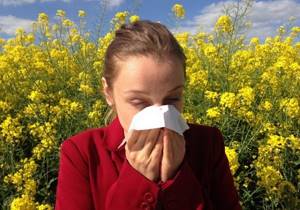
What foods should you exclude?
Highly allergenic foods should not be consumed in full if children are prone to allergies.
These include:
- cow's milk;
- citruses;
- red, orange fruits;
- nuts;
- chocolate;
- fish, seafood;
- chicken meat;
- eggs;
- honey;
- coffee;
- smoked and canned products;
- seasonings, spices, food additives, mayonnaise, sauces;
- tomatoes;
- mushrooms;
- strawberries, raspberries;
- sweet.
Hypoallergenic diet for children under and over 1 year old
The diet for young children has its own nuances. At this time, the immune system is just beginning its work. And it is very important not to provoke a failure. Therefore, parents are careful about the introduction of complementary foods, new dishes, and study literature. All changes in diet are controlled by the local pediatrician.
The main points of hypoallergenic nutrition for children aged one year:
- complementary foods are introduced according to age;
- Porridges with gluten, red and orange fruits, and vegetables are excluded from the diet;
- Children should not eat chicken or fish. The only meat products are veal, turkey, rabbit, and horse meat. After a year, you can diversify your diet with tongue, liver, beef heart;
- sugar is completely excluded, as are honey, jam, and ready-made confectionery products;
- food is prepared by boiling;
- eggs are excluded for up to a year, then you can carefully introduce the yolk into the diet. At the same time, the reaction is monitored;
- exclude whole cow's milk. You can introduce fermented milk products and cottage cheese into your diet and monitor tolerance. They are also not suitable for all children.
The main task of parents of a small child is to purchase, prepare, and give safe foods to the child. These are gluten-free porridges, allowed meat, kefir, natural yoghurts without additives. Selected fruits. Green apples and pears are least likely to cause a reaction. You can have light-colored vegetables. Potatoes for children under one year old should be finely chopped and soaked in cold water to remove starch.
Important! All food is prepared using gentle methods; heavy foods and fats are not used. During the diet, you need to make the work of the digestive system as easy as possible.
Sample menu for one day
The diet of young children is not varied. And the exclusion of sugar and large amounts of fruit does not have the best effect on the taste of dishes. Therefore, parents will have to try to feed the child.
- Breakfast: dairy-free porridge from any suitable cereal.
- Snack: fruit puree.
- Lunch: vegetable soup, boiled meat, compote of fresh or dried berries.
- Snack: vegetable puree.
- Dinner: meatballs or meatballs, side dish of buckwheat porridge or vegetable puree, apple juice.
- At night: cottage cheese or yogurt, kefir.
If the baby refuses unusual food, then you need to act according to the situation. For example, instead of porridge, give meat or vegetables several times. It's important not to give up. Within a week, the receptors will be cleared, old tastes will begin to be forgotten.
What foods should be limited?
Products with medium activity can not be included in the diet in dosed amounts every day.
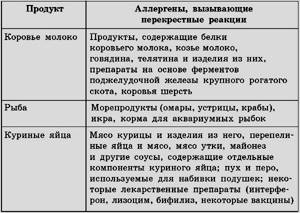
These include:
- noodles, vermicelli, pasta;
- premium bakery products;
- cottage cheese, kefir, low-fat yogurt;
- whole goat milk.
- butter, sour cream as additives to dishes;
- beef;
- potato;
- bananas;
- peas, beans;
- salt, sugar.
Hypoallergenic diet for children 2 years old
At the age of two years, the issue of complementary feeding is completely resolved. Therefore, a hypoallergenic diet for children is aimed specifically at therapeutic nutrition. But when introducing any new product, it is also recommended to be gradual and fractional. If a minor reaction occurs, food is excluded.
What is added to the hypoallergenic diet for children 2 years old:
- new vegetables, fruits, berries (apricot, peach, red currant, bell pepper);
- baked dishes (casseroles, cheesecakes from the oven, homemade biscuits, cookies, if there is no reaction to wheat);
- broth-based soups;
- You can add corn, peas, chickpeas.
It is at this age that the transition to the adult table occurs. But don’t get carried away with fried, stewed dishes with lots of sauces and spices. The easier the food is to digest, the better for the child.
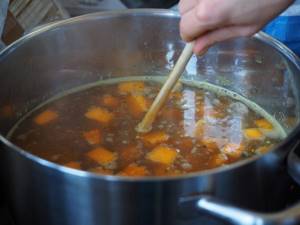
Hypoallergenic diet for children 2 years old (menu)
As the list of permitted products increases, the children's menu becomes more diverse. The child can be seated at a common table. Kindergarten nutrition may be suitable for him, but with minor adjustments.
How to eat a hypoallergenic diet for children 2 years old (menu):
- Breakfast: porridge, tea.
- Second breakfast: cottage cheese, any allowed fruit.
- Lunch: soup with vegetables and meatballs, can be prepared in light broth, compote.
- Afternoon snack: cottage cheese casserole, optionally with added fruit, juice or compote.
- Dinner: stewed meat with vegetables.
- Second dinner: any fermented milk product.
Fully or partially limited products
The diet for children with allergies involves the exclusion of products such as meat/fish/mushroom broths and dishes based on them. It is not allowed to consume waterfowl meat, fatty red meats, smoked meats, milk, sausages, chicken eggs, “red” fish and caviar of all types, citrus fruits, chocolate, sweets and flour products, seafood (shrimp, mussels, squid), sour cream, all salted and pickled foods, canned food, cream, sweet curds, cooking/animal fats, salty and fatty cheeses.
Excluded from the diet: sugar, jam, honey, confectionery, ice cream, sweets, jams. White rice, pasta, and semolina are subject to restrictions.
All seasonings (vinegar, ketchup, mayonnaise, mustard, horseradish), mushrooms, pineapple, eggplant, melon, butter dough and fruits/vegetables of red and orange color (red apples, tangerines, beets, tomatoes, oranges, strawberries, strawberries) are excluded from the diet , radish, carrots, radishes), nuts (hazelnuts).
The diet menu should not include foods that contain dyes and preservatives, fruit tea, fruit/vegetable juices from red/yellow berries, coffee, or sweet carbonated drinks.
Table of prohibited products
| Proteins, g | Fats, g | Carbohydrates, g | Calories, kcal | |
Vegetables and greens | ||||
| carrot | 1,3 | 0,1 | 6,9 | 32 |
| salad pepper | 1,3 | 0,0 | 5,3 | 27 |
| tomatoes | 0,6 | 0,2 | 4,2 | 20 |
Fruits | ||||
| oranges | 0,9 | 0,2 | 8,1 | 36 |
| bananas | 1,5 | 0,2 | 21,8 | 95 |
| pomegranate | 0,9 | 0,0 | 13,9 | 52 |
| grapefruit | 0,7 | 0,2 | 6,5 | 29 |
| lemons | 0,9 | 0,1 | 3,0 | 16 |
| mango | 0,5 | 0,3 | 11,5 | 67 |
| tangerines | 0,8 | 0,2 | 7,5 | 33 |
Berries | ||||
| grape | 0,6 | 0,2 | 16,8 | 65 |
| Red currants | 0,6 | 0,2 | 7,7 | 43 |
Nuts and dried fruits | ||||
| nuts | 15,0 | 40,0 | 20,0 | 500 |
| raisin | 2,9 | 0,6 | 66,0 | 264 |
Cereals and porridges | ||||
| white rice | 6,7 | 0,7 | 78,9 | 344 |
Confectionery | ||||
| jam | 0,3 | 0,2 | 63,0 | 263 |
| jam | 0,3 | 0,1 | 56,0 | 238 |
| candies | 4,3 | 19,8 | 67,5 | 453 |
| pastry cream | 0,2 | 26,0 | 16,5 | 300 |
Ice cream | ||||
| ice cream | 3,7 | 6,9 | 22,1 | 189 |
Cakes | ||||
| cake | 4,4 | 23,4 | 45,2 | 407 |
Chocolate | ||||
| chocolate | 5,4 | 35,3 | 56,5 | 544 |
Raw materials and seasonings | ||||
| mustard | 5,7 | 6,4 | 22,0 | 162 |
| ketchup | 1,8 | 1,0 | 22,2 | 93 |
| mayonnaise | 2,4 | 67,0 | 3,9 | 627 |
| honey | 0,8 | 0,0 | 81,5 | 329 |
| vinegar | 0,0 | 0,0 | 5,0 | 20 |
Dairy | ||||
| condensed milk | 7,2 | 8,5 | 56,0 | 320 |
| cream | 2,8 | 20,0 | 3,7 | 205 |
| sour cream 30% | 2,4 | 30,0 | 3,1 | 294 |
| sour cream 40% (fat) | 2,4 | 40,0 | 2,6 | 381 |
Cheeses and cottage cheese | ||||
| cheese | 24,1 | 29,5 | 0,3 | 363 |
| dor blue cheese | 21,0 | 30,0 | 0,0 | 354 |
| blue cheese | 17,6 | 31,0 | 1,8 | 363 |
| amber processed cheese | 7,0 | 27,3 | 4,0 | 289 |
| cottage cheese 18% (fat) | 14,0 | 18,0 | 2,8 | 232 |
Meat products | ||||
| pork | 16,0 | 21,6 | 0,0 | 259 |
| pork fat | 1,4 | 92,8 | 0,0 | 841 |
| salo | 2,4 | 89,0 | 0,0 | 797 |
| mutton | 15,6 | 16,3 | 0,0 | 209 |
Sausages | ||||
| smoked sausage | 16,2 | 44,6 | 0,0 | 466 |
| smoked sausage | 9,9 | 63,2 | 0,3 | 608 |
| sausages | 10,1 | 31,6 | 1,9 | 332 |
| sausages | 12,3 | 25,3 | 0,0 | 277 |
Bird | ||||
| smoked chicken | 27,5 | 8,2 | 0,0 | 184 |
| duck | 16,5 | 61,2 | 0,0 | 346 |
| smoked duck | 19,0 | 28,4 | 0,0 | 337 |
| goose | 16,1 | 33,3 | 0,0 | 364 |
Eggs | ||||
| chicken eggs | 12,7 | 10,9 | 0,7 | 157 |
Fish and seafood | ||||
| fried fish | 19,5 | 11,7 | 6,2 | 206 |
| smoked fish | 26,8 | 9,9 | 0,0 | 196 |
| salted fish | 19,2 | 2,0 | 0,0 | 190 |
| Red caviar | 32,0 | 15,0 | 0,0 | 263 |
| black caviar | 28,0 | 9,7 | 0,0 | 203 |
| canned fish | 17,5 | 2,0 | 0,0 | 88 |
| semi-finished fish products | 12,5 | 6,7 | 14,7 | 209 |
| sardine | 20,6 | 9,6 | — | 169 |
| mackerel | 18,0 | 13,2 | 0,0 | 191 |
| cod (liver in oil) | 4,2 | 65,7 | 1,2 | 613 |
Oils and fats | ||||
| creamy margarine | 0,5 | 82,0 | 0,0 | 745 |
| coconut oil | 0,0 | 99,9 | 0,0 | 899 |
| palm oil | 0,0 | 99,9 | 0,0 | 899 |
| rendered beef fat | 0,0 | 99,7 | 0,0 | 897 |
| cooking fat | 0,0 | 99,7 | 0,0 | 897 |
| rendered pork fat | 0,0 | 99,6 | 0,0 | 896 |
Alcoholic drinks | ||||
| vodka | 0,0 | 0,0 | 0,1 | 235 |
Non-alcoholic drinks | ||||
| cola | 0,0 | 0,0 | 10,4 | 42 |
| black coffee | 0,2 | 0,0 | 0,3 | 2 |
| Pepsi | 0,0 | 0,0 | 8,7 | 38 |
| sprite | 0,1 | 0,0 | 7,0 | 29 |
| tonic | 0,0 | 0,0 | 8,3 | 34 |
| energy drink | 0,0 | 0,0 | 11,3 | 45 |
Juices and compotes | ||||
| cranberry jelly | 0,0 | 0,0 | 13,0 | 53 |
| * data is per 100 g of product | ||||
Hypoallergenic diet for children over 3 years old
The older the child gets, the easier it is for the body to fight allergens. The diet for allergies in children 3 years old becomes even more varied. Especially if the child is not allergic to wheat flour. At this age, you can introduce regular and lazy dumplings, homemade dumplings, and pastries into your diet. If gluten is intolerable, then all this can be prepared from corn or buckwheat flour.
By this age it is already known whether cow's milk is tolerated. New vegetables and berries also continue to be introduced into the diet. Soups, casseroles, stews and other dishes become even more varied and tastier; the whole family can eat these dishes.
What to feed your baby:
- various cereals. You can add steamed pumpkin, baked apples, cook with other hypoallergenic berries and fruits;
- casseroles. Not necessarily from cottage cheese. You can add cereals, pasta, dried fruits and even vegetables;
- meatballs, cutlets, meatballs. Minced meat products can be present in main courses, soups, casseroles;
- vegetable purees. You don't have to use only potatoes. It’s worth paying attention to zucchini, cauliflower, and broccoli, it’s time to focus on pumpkin and carrots. Mixed purees have very interesting flavors;
- soups. Their types also change. You can cook creamy dishes using vegetable and meat broths. Sometimes children from the age of three are given white fish;
- baking. Cookies, flatbreads, and buns for children are prepared without sugar and with a minimum amount of fat. Fried pancakes and pies should still be avoided. But sometimes you can bake from the oven.
Based on these dishes, a hypoallergenic diet is built for children 3 years old; more fresh vegetables and fruits are introduced into the menu. Fiber helps remove allergens, normalizes stool, and cleanses the body from the inside.
What does the menu for one day look like:
- Breakfast: porridge with or without milk, depending on the reaction, apple.
- Afternoon snack: pumpkin puree, compote.
- Lunch: soup with meatballs and noodles, buckwheat porridge with meat, compote, fresh cucumber.
- Afternoon snack: pear or other fruit.
- Dinner: mashed potatoes, cutlets, grated carrots.
- Second dinner: cottage cheese or other fermented milk product.
Principles of dietary nutrition
Consider the child’s dietary intake:
- The child's diet must contain the required amount of proteins, fats and carbohydrates. To prevent allergens from accumulating, you should avoid monotony in your diet.
- A baby with allergies should be fed more often, but little by little (4-5 times a day) so as not to burden the immature digestive system.
- It is recommended to steam, bake or boil dishes, which reduces their allergic activity.
- Before cooking, potatoes should be soaked in water for at least 12 hours to remove the starch to which they are often sensitive. Cereals are soaked for 1.5-2 hours, getting rid of toxic chemicals. The water should be changed several times.
- Meat soups should be cooked in a second broth.
- It is necessary to reduce the amount of salt in the diet and increase the child’s consumption of drinking water. This helps to quickly remove harmful substances from the body.
- You need to carefully study what components are included in the product, reading the label and giving preference to natural ingredients.
Hypoallergenic diet for children 5 years old
It is most difficult for preschoolers to adhere to a hypoallergenic diet. They are outside the home more often. They are treated to acquaintances and friends, children attend holidays. Regardless of external circumstances, a hypoallergenic diet for children at home must be strictly followed.
What's added to the menu:
- various dried fruits (prunes, dried apricots, raisins);
- baking, but with careful study of the composition or only from approved products;
- all vegetables to which the child does not have a reaction;
- casseroles, cheesecakes, puddings, jellies and other homemade desserts;
- pork, but choose lean cuts.
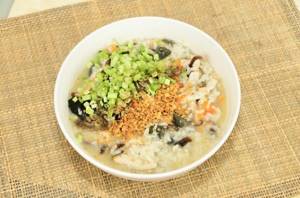
A hypoallergenic diet for children 7 years old is no different. Approximately the same menu should be followed by adults. Below is an approximate option for several days. It fully meets the requirements of the child's body.
| First day | Second day | The third day | Fourth day | Fifth day | |
| Breakfast | Rice porridge with dried apricots | Buckwheat | Pumpkin porridge with rice | Corn porridge with dried fruits | Oatmeal with banana |
| Lunch | Cottage cheese casserole | Baked cheesecakes | Cottage cheese with banana | Pear, 3 biscuits | Cottage cheese with apple |
| Dinner | Cauliflower soup with rabbit, pilaf with beef, compote | Vermicelli soup, meatballs with mashed potatoes, apple compote | Cabbage soup without tomato in beef broth, pasta with minced meat, compote | Vegetable soup, meatballs with vermicelli, tea | Buckwheat soup with meat and vegetables, vegetable stew, compote |
| Afternoon snack | Banana | Apple | Pear | Pumpkin puree | Grated carrot and apple salad |
| Dinner | Steam cutlets, vegetable puree, fresh cabbage | Stewed veal, side dish of any cereal, fresh cucumber | Zucchini and meat casserole | Meatballs with rice, cabbage salad | Stewed turkey or rabbit, mashed potatoes |
At night you can give milk and fermented milk products (cottage cheese, fermented baked milk, kefir) if there is no reaction to them. If necessary, you can replace it with cucumber or carrots. It is allowed to use meat dishes for the second dinner. It could be a steamed cutlet, a piece of stewed beef or turkey. But under no circumstances should you give raw fruit at night. They can provoke fermentation, flatulence, and abdominal pain.
Diet recipes
Millet porridge with pumpkin:
- 200 g of peeled and diced pumpkin should be poured with 1 tbsp. water and simmer for 30 minutes.
- 0.5 cups of millet cereal is washed and added to the pumpkin.
- Pour 1.5 tbsp into the pan. water.
- Salt and add sugar to taste. Cook for another 20 minutes.
Vegetable stew with broccoli:
- Potatoes, carrots, and onions need to be peeled, chopped, and placed in a saucepan.
- Pour water over the vegetables, salt and simmer for 20 minutes.
- Add frozen green peas and broccoli. Mix everything and cook for another 20 minutes.
- Garnish with dill and parsley.
Egg, dairy and gluten free cupcakes:
- 100 g of peeled and chopped apple (can be replaced with pear, banana or zucchini) pour 180 ml of water and grind in a blender.
- Add 5 g of soda slaked with vinegar.
- Separately, sift 180 g of rice flour (or corn) into a bowl, add 120 g of sugar and a pinch of salt. Pour into the fruit mixture and mix.
- Pour in 180 g of vegetable oil and mix well again.
- Place in molds and bake at 180 degrees, selecting the convection mode.
If, when allergies occur in children, you strictly adhere to a special diet, follow the rules for its administration, and carefully monitor the child’s condition, then you can completely get rid of the allergy. The baby is growing, his digestive system is strengthening, sensitivity to allergenic foods is gradually decreasing and by the age of 7 it may disappear completely.
Cross stimuli
If a person suffers from food allergies, it is also important to exclude external irritants. They increase the load on the child’s body, making it more difficult for the immune system to recover. You can also get tested for these allergens, but they are usually excluded without fail.
What increases the general allergic background:
- pollen of flowers, trees, and some types of grass. In spring and early summer, it is recommended to immediately remove the child’s street clothes after walking, rinse the nose, and be sure to give antiallergic medications;
- dust. It can be at home, library, street, there are other types. It is important to carry out wet cleaning daily.
- animal fur, bird feathers. Pets must be isolated;
- bed mites. It is important to wash clothes at a temperature of 70 degrees and change pillows and blankets annually.
Also, don’t forget about baby hygiene products. They should not contain fragrances or aggressive components. Otherwise, no diet will help cope with the body's reaction.

Important! The article is for informational purposes only. Before using the diet, you should consult a specialist.
How to feed a baby with food allergies
Picky eating habits for small children have nothing to do with not feeding children with allergies. The big problem is that parents do not know what to feed their baby with a food allergy in order to prevent future reactions and not live with constant worry about the health of their child. Get to know the most dangerous and safe foods for feeding newborns and babies with allergies while breastfed and bottle-fed, as well as during the period of introducing complementary foods. Explanations are given by Alla Anatolyevna Shcherbakova, candidate of medical sciences, doctor of the highest category, pediatrician and deputy head of the children's hospital on Savelovskaya.
— Alla Anatolyevna, you observe healthy children and treat sick ones. Please tell us what food allergies are in a newborn and why they appear in children even when breastfed?
— Food allergy is an excessive reaction of the body to allergenic substances. In young children, food allergens are more common. Recently, the number of children with food allergies has increased significantly, and this problem is acute in all countries of the world, including Russia. But why is still unclear. There are different theories about the origin of food allergies.
- Nutritional theory:
a large population of people was fed not with breast milk, but with dry adapted milk formulas based on cow's milk proteins. Cow protein is considered one of the causes of food allergies. - Hygiene theory:
the best “vaccination” against allergies is a little dirt. If a person grows up in sterile conditions - brushes his teeth with an antibiotic paste, washes clothes only with antiseptics, treats his hands with antibacterial gel - this leads to allergic reactions in him and his children.
— What are the main symptoms that indicate that a child has a food allergy?
— There are several symptoms, as well as forms of food allergies. For example, some researchers consider colic in infants to be its manifestation.
It is quite difficult for a mother to distinguish food allergies from other diseases. It happens that this is difficult to do even for a specialist with extensive experience. In any case, if the child has skin rashes and anxiety, it is better to show him to a doctor.
| Form of food allergy | Symptoms and signs | What problem can be confused with |
| Skin (atopic dermatitis) |
|
|
| Gastrointestinal |
|
|
| Mixed |
|
| Form of food allergy: Skin (atopic dermatitis) | Symptoms and signs
| What problem can be confused with
|
| Form of food allergy: Gastrointestinal | Symptoms and signs
| What problem can be confused with
|
| Type of food allergy: Mixed | Symptoms and signs
|
How early can food allergy symptoms appear?
“Children begin to suffer from food allergies at an early age, but no one knows why this happens. The onset of food allergies in the lion's share of cases is observed in the first weeks and first month of a child's life. However, if the baby reaches 6 months without developing allergies, the risk of allergies in the future is low.
The peculiarity of food allergies in children is that they manifest themselves after some time, that is, they have a cumulative nature. In adults, hypersensitivity is usually of an immediate type (for example, you entered a room where there was a cat, and an allergic runny nose immediately appeared).

— What substances and foods do children react to more often?
— The most common cause of childhood food allergies is intolerance to cow's milk proteins (confirmed in nine out of ten infants, in children of the first months of life - in 100%), followed by wheat.
In infancy, any substance can cause an allergy. Allergic reactions are most often caused by milk, wheat, eggs, fish, seafood, soy, peanuts and tree nuts. At the same time, a food allergy to milk may go away over time, but to fish or seafood it may persist for life. And if the baby shows hypersensitivity to some product (Quincke's edema, anaphylactic shock), then the likelihood of repetition of such strong reactions is also high.
— Alla Anatolyevna, does the risk of developing food allergies depend on heredity?
— The hereditary factor undoubtedly increases the risk of developing allergic reactions, but even if the parents are not allergic, it is not a fact that the child will be born without allergies. If at least one of the parents has a food allergy, then the risk of its occurrence in the child’s life is very high. If both parents have food allergies, then with a 100th probability the baby will have food intolerance.
— Is it possible to understand in advance by any signs that a child will later develop an allergy?
— The development of food allergies is not only associated with heredity. The risk of developing allergic reactions increases:
- feeding with dry milk formula;
- treatment with antibiotics at an early age;
- past viral infections;
- hospital stay with artificial ventilation.
— How are food allergies treated? Should I give my child medications?
— The treatment of food allergies is based on prescribing to the child a special medicinal mixture - hydrolyzate or amino acid mixture with the exception of cow's milk proteins. If the baby is breastfed, then a dairy-free diet is recommended for the mother. The child may also be prescribed emollients to moisturize and nourish dry skin, anti-inflammatory drugs, steroid hormones, antihistamines, phages and even some probiotics. Treatment is individual and determined by the doctor.

— Is it possible to cure food allergies solely with diet and special nutrition?
— Food allergy to cow's milk protein in the form of atopic dermatitis or gastrointestinal form, as a rule, goes away by 1-1.5 years. But it should be understood that if a child has atopic dermatitis in the first month of life, then this is the debut of the “atopic march” - a general inflammatory allergic reaction that will not go away with age and, with constant irritation of the immune system, will later acquire other forms. The skin rash may end, but hay fever, intolerance to animal hair and plant pollen, dust allergy or bronchial asthma will appear. Special therapeutic milk nutrition reduces the risk of atopic disease in adulthood.
— What is a food diary for allergies and how to keep it?
— A food diary for the mother of a child with allergies is an indispensable notebook where it is written down what and how much the child ate during the day by the hour, where unwanted reactions, daily weight gain, stool patterns, and cases of enuresis are indicated. The minimum period for keeping a diary is a week. Based on the records, the doctor can draw conclusions and substantiate the proposed diagnosis.
— What preventative measures should mothers take to prevent acute manifestations of allergies if the baby is predisposed to it?
- If the child is healthy - there are no complaints, he eats well and gains weight, but his sister or brother, mother or father has allergies, then parents should be on guard: food allergies are possible. A nursing mother should limit the consumption of cow's milk and products made from it in her diet. A formula-fed baby may be prescribed a goat milk-based formula (for example, MAMAKO® Premium formula) or a partial hydrolyzate labeled GA.
— Alla Anatolyevna, what are the nutritional features for allergies while breastfeeding?
— If allergies occur in a breastfed baby, the mother should temporarily adhere to a dairy-free diet. This means that you need to completely stop consuming a number of products made from cow's milk, the protein of which most often causes allergies. The following products will be prohibited:
- milk,
- milk porridges,
- kefir, yogurt, fermented baked milk, yogurt, Varenets, cottage cheese,
- cheese,
- butter,
- whey powder,
- dry milk protein.
This also includes veal and beef, since cow meat can cross-cause food allergies. You can eat everything else - lean pork, fish, eggs, cereals, vegetables and fruits, sugar and other products.
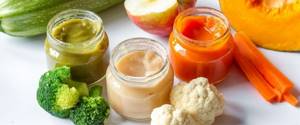
— Is it possible to leave a child breastfed if he has an allergy, or should he be switched to a medicinal formula and alternate it with breast milk?
- If the mother follows a dairy-free diet, then she should continue to breastfeed the baby, since breast milk is the best nutrition for the baby. But each case is individual.
Indications for the medicinal mixture: if after 1-1.5 months of following the diet, the child still has skin rashes, dryness, atopic background, regurgitation, poor weight gain, blood and mucus in the stool.
But even when introducing formula, the mother needs to continue to follow a dairy-free diet, express and freeze milk. After two weeks, if the dynamics are positive and there are no complaints from the baby, you can try feeding him breast milk again. In general, of course, what and how to do is discussed at a doctor’s appointment.
— What diet should a child with allergies have?
— A breastfed allergic child lives a normal life, like children without food allergies, and feeds on demand. If, while the mother is following the diet, after a month or a month and a half, the child’s complaints persist and a decision is made to prescribe therapeutic nutrition, then the child receives the formula by the hour, just like healthy bottle-fed babies.
— What to feed a child with food allergies on mixed and artificial feeding? How are formulas for children with food allergies different from regular formula?
— When formula-fed, the treatment for food allergies is to exclude formula milk and feed the child a dairy-free medicinal hydrolyzed formula or an amino acid mixture. A stepwise approach is used in treatment.
- In 90% of cases, hydrolyzate helps children with food allergies, and the complaints go away.
- If the hydrolyzate is not suitable, the child is fed a formula based on amino acids.
- If complaints persist with the amino acid mixture, then “mixtures of choice” are prescribed - for example, soy.
With mixed feeding, the mother adheres to a dairy-free diet, and the baby, in addition to breast milk, is supplemented with a formula based on hydrolysates or amino acids. This includes treating food allergies and reducing the risk.

A child without food allergies, skin and stomach problems can receive mixed feeding. In this case, the mother does not need to adhere to a special diet, and the child can be given a regular formula, for example, to prevent allergies - a mixture with goat milk MAMAKO® Premium.
— Is it true that a child with food allergies and poor weight gain should be switched to complementary foods earlier?
“In such a situation, the doctor first deals with food allergies and ensures that the baby gains weight well, and only then complementary foods are introduced. WHO recommends the introduction of complementary foods starting at 6 months of age. Complementary feeding is a transition to solid foods for healthy children and therefore cannot be considered a treatment for food allergies.
— Are there special complementary foods for food allergies? What can and cannot be eaten if you have allergies?
— There are no special complementary foods. A child who has been diagnosed with a food allergy must be given the correct basic nutrition - infant formula or breast milk (and the mother must have a correctly determined diet). Complementary feeding for a child with allergies is introduced at the same time as for healthy children. But if the mixture is not introduced or is not suitable and weight is not gained, then complementary feeding can be postponed until therapeutic nutrition is selected and the complaints and manifestations of atopic dermatitis end. Therefore, it is more correct to introduce complementary foods to a child with food allergies not earlier, but later than the accepted dates.
— What foods are there practically no allergies to, and what can you safely give to your child?
— There are no such products, with the exception of sugar and water. An allergy can be to any product that contains proteins, fats and carbohydrates.
— How to introduce new foods to a child with food allergies, if the list of his allergens includes most of the products that are recommended for his age?
“Unfortunately, there is no way to diversify the menu, and some young patients eat a very limited range of products. In this situation, sometimes tolerance training helps, when the child is given a little taste of the “forbidden” product. For example, if a mother suspects that her child is allergic to pear (his cheeks were already turning red), then there is no need to give him the whole fruit: you can let him lick it and observe the reaction. But this does not apply to cow's milk. If a food allergy to his proteins occurred in the first weeks of life, then most likely the child will not eat dairy products until he is one year old.
— Does a child with food allergies need additional vitamin supplements?
— According to WHO recommendations, all children are prescribed vitamin D for prevention. If the baby is compensated for food allergies (the formula is correctly selected for him), then he will receive all the vitamins, micro- and macroelements, and nutrients from the split mixture in the required volume for growth and development.
If a child is not compensated for food allergies, giving vitamin-mineral complexes is useless, because he will not absorb them. Therefore, it is necessary to initially understand food allergies, and then, if necessary, prescribe vitamins under the supervision of a specialist.
The most common cause of food allergies in young children is intolerance to cow's milk proteins. When treating it with artificial feeding, a special split formula is prescribed; while breastfeeding, the nursing mother is prescribed a dairy-free diet. With a properly selected diet, complaints and manifestations of allergies will go away, and therefore, with the introduction of complementary foods, a child with food allergies will be no different from his peers in growth and development.
Pediatrician Alla Anatolyevna Shcherbakova
*The ideal food for an infant is mother's milk. WHO recommends exclusive breastfeeding for the first 6 months. MAMAKO® supports this recommendation. Before introducing new foods into your baby’s diet, consult a specialist.
Foods that often cause allergic reactions
There are already statistics from allergists, and according to them, in 9 out of 10 cases of food allergies, the fault lies with milk. Many mothers and their experienced relatives believe that it is better to feed their infants with cow's milk. Children's bodies do not agree with this. The composition of milk in the first years is rejected by the child's body. Cow protein (albumin) is contained in large quantities and causes a negative reaction. Fermented milk products help reduce allergies. The second place in the frequency of allergic attacks is taken by fish. Children's bodies may not accept a particular type of fish or all seafood products at an early age. Alas, “fish allergy” most often does not go away with age and continues until the end of life. The problem is the presence of specific proteins in products of sea or river origin. Heat treatment cannot neutralize them.
Third place rightfully belongs to chicken eggs. The body subsequently reacts negatively to chicken broths and the meat of this bird. Researchers claim that it is the protein that causes allergies, and the yolk is safe.
Cereals (wheat and rye) often lead to a negative reaction. Rice and buckwheat are much less likely to be rejected by the child’s body. A yeast-free diet is necessary for those who have a reaction to yeast bread. Developments in the food industry using soy have caused a large number of attacks, especially when it replaces natural milk.
Diet therapy in older children
First (acute) stage . With it, a nonspecific hypoallergenic diet is prescribed for a week, excluding potential allergens. At the same time, an allergic examination of the child’s blood should be carried out using the allergy test method. Avoid products with food additives and those that irritate the gastrointestinal mucosa. These include everything fried, pickled, salted, as well as smoked and spiced foods.
Dairy products, some types of cereals and flour products should be limited in the menu of an older child if he has symptoms of allergies. Animal fats in the diet are reduced and replaced with vegetable fats. This helps strengthen the immune system, and damaged skin areas are restored.
Second phase . Parents, together with the doctor, create an individual menu for their sick child, taking into account the detected allergens. From 3 to 6 months they are excluded from the diet. Third stage. When the clinical manifestations of allergies subside, the diet is gradually expanded, slowly increasing the daily intake of “forbidden” foods. However, allergenic products remain prohibited. You can't feed them!
The expansion of the range takes place according to the following scheme: they are introduced one at a time, and the child’s condition is monitored (skin, stool, temperature). If increasing the dosage of a risky food occurs without a negative reaction, supplement with the next product. This will relieve the child of allergies or help achieve long-term remission. The body becomes more tolerant to allergens and no longer reacts to them before school.
